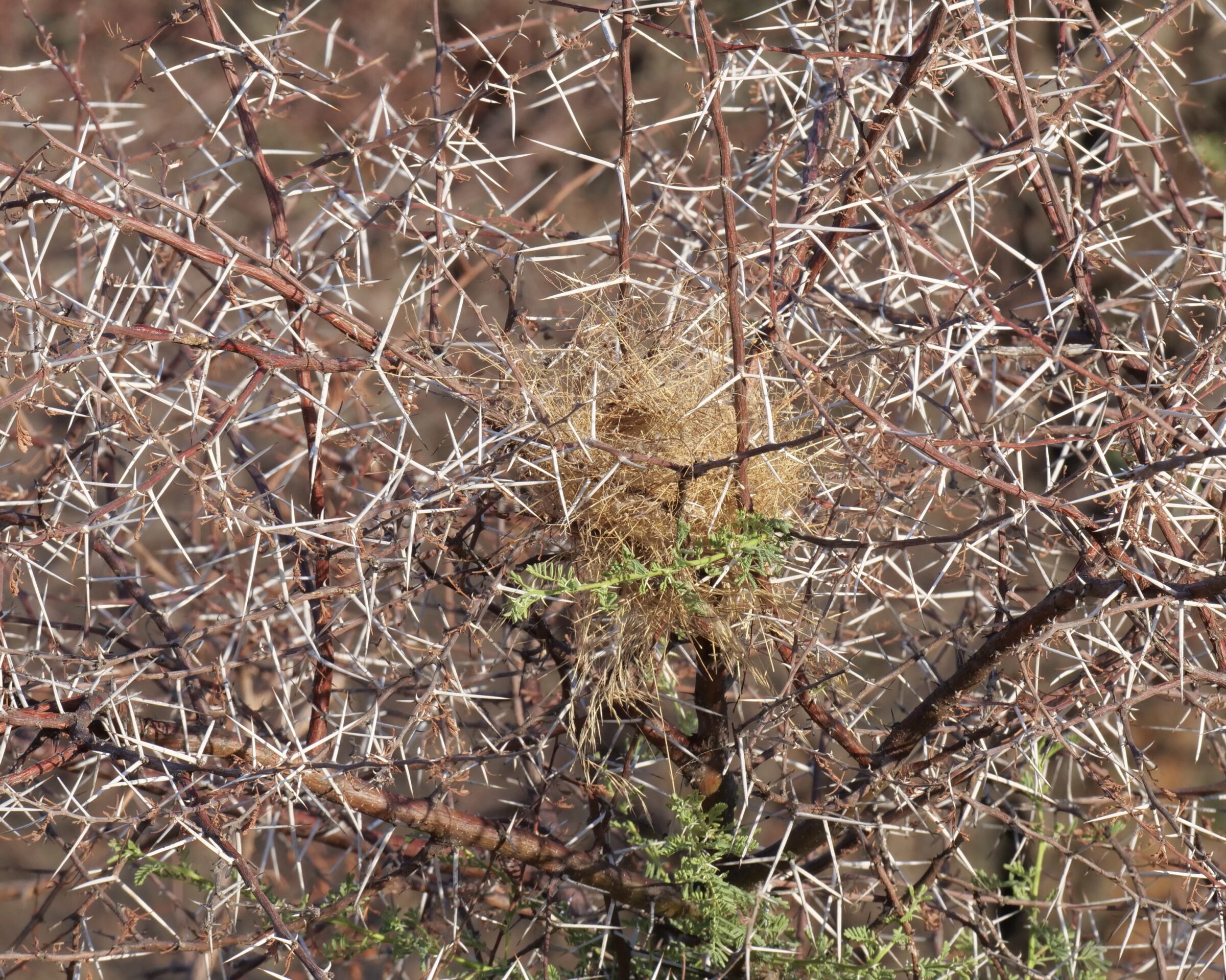Many of Africa’s “acacias” – particularly those commonly known as thorn trees/bushes – have a great many very fierce thorns, designed to deter browsing animals.
Nesting birds – usually, one of the weavers – are undeterred, and the feathered home-builders also often get a “free kick” from those thorns.
Birds who nest in the thick of thorns are deploying the tree’s weapons to defend themselves (and their young) from bird-eating predators.
Presumably, the thorn trees also benefit; under this “rent-free, with defence thrown in” arrangement, the tree’s roots receive frequent, slow-release, micro-deliveries of bird excrement – a fine fertiliser.
Photo is copyright Doug Spencer, taken in Okonjima at 6.57 am on 04 December 2022.
Footnote:
The first species to be named “acacias” were African; the word derives from the Greek word “akis”, meaning “barb” or “thorn”.
After “discovering” them in Africa, Europeans encountered some more “acacias” in Asia and the Americas.
Later, Europeans “discovered” Australia, which is home to hugely many more “acacias”.
By late in the 20th century the genus Acacia had become “far too big”, so a Queensland botanist set out to overhaul it.
Arguably, the (still disputed) 21st century outcome is yet another (metaphorical) example of “white folks walking all over black folks”.
The division of genus Acacia into several genera has seen Australia’s huge number of “acacias” retain the pre-existing Acacia genus tag, whilst the original, African “acacias” are now deemed members of “new” genus Senegalia or of “new” genus Vachellia.
ABC Science has a story, headlined Australia or Africa? The botanical controversy over who can call their plants “Acacia”. Read it here.
Unsurprisingly, every time I recently heard any Namibian plain speaker of English talk of local thorny, woody species, he or she called them “thorn trees”, “thorn bushes”, “camel thorns” or “acacias”.
My ears never heard anyone say “Senegalia” or “Vachellia”.
